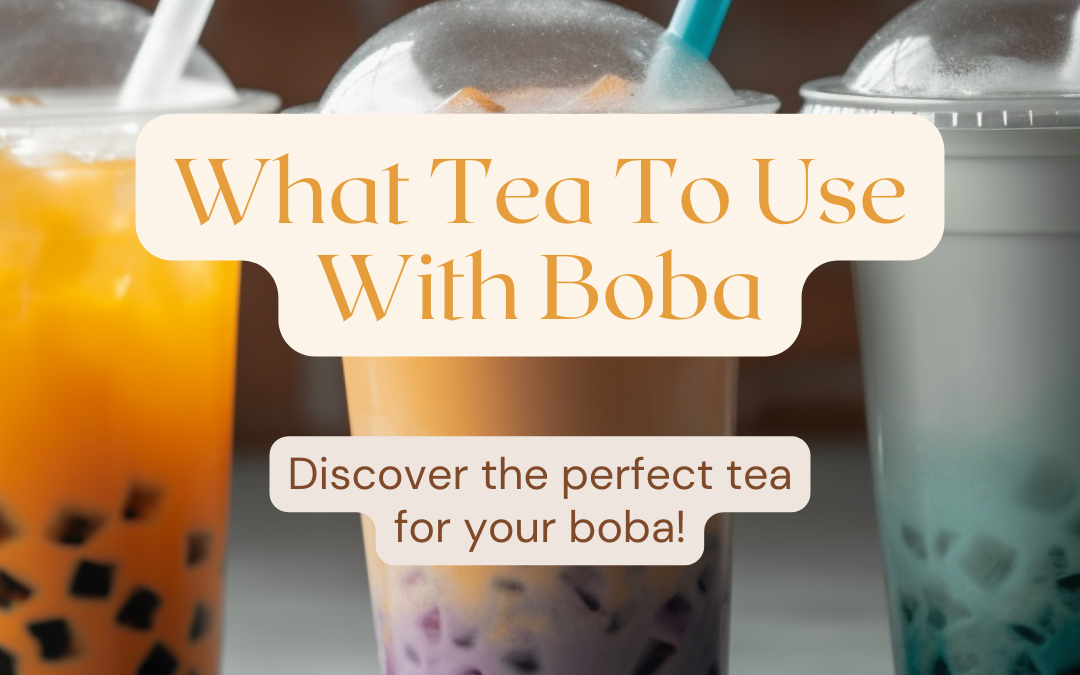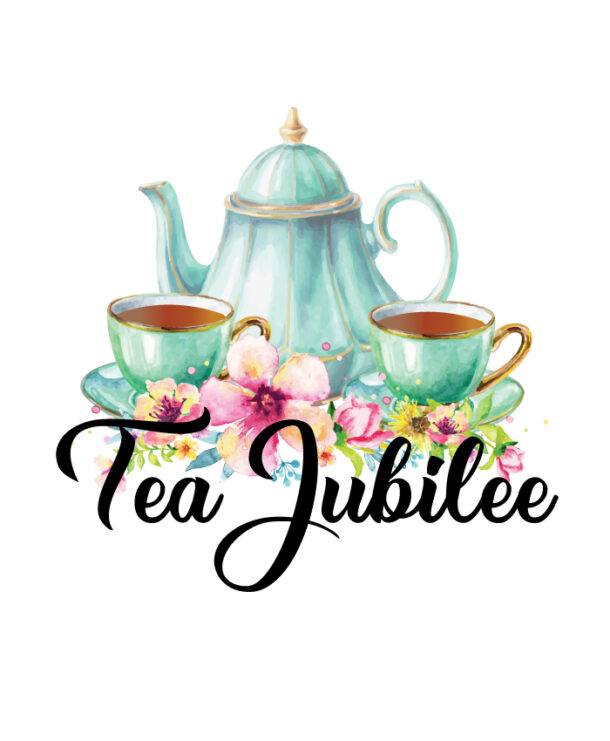==================
A Caveat and Affiliates
First off, a little caveat: within my articles you will find affiliate links, meaning if you buy them, I get a small commission. Your cost is not affected. In addition, I am an Amazon Associate and I earn from qualifying purchases on Amazon.
And yes, if I say that I recommend a product here, it means I truly believe it is a good product. I refuse to recommend any product that I have not researched and believe to be a good value.
Even better, I provide you with a very clear picture of the product, it’s use, and the probable value.
Earning your trust is important to me. I run this website myself and the commissions and donations help support the site.
Sound reasonable and fair enough? Let’s continue to the article.
==================
Contents
What Tea to Use with Boba: A Comprehensive Guide
Do you know that there are certain teas for boba tea? Well, check out this post about what tea to use with boba. I will discuss many things in this one simple-to-understand post.
With so many different types of tea available, choosing which one to use in a boba drink can be overwhelming. However, the type of tea used can greatly affect the overall flavor and experience of the drink.

One of the most commonly used teas in boba is black tea. This robust tea provides a strong base for the sweetened milk and tapioca pearls. Some popular black teas in boba include Assam, Ceylon, and Keemun. Green tea is also popular, especially for those who prefer a lighter and more delicate flavor.
Jasmine green tea is a common choice, as the floral notes pair well with the sweetness of the boba. Additionally, oolong tea can provide a unique flavor profile with its rich and complex taste. Ultimately, the choice of tea depends on personal preference and the desired flavor profile of the drink.
Understanding Boba Tea

History of Boba Tea
Boba tea, or bubble tea, originated in Taiwan in the 1980s. It is a tea-based drink typically served with chewy tapioca balls, also known as boba, added to the bottom of the cup. The drink quickly became popular in Taiwan and has since spread to other countries worldwide.
Boba Tea Basics
Boba tea is typically made with black tea but can also be made with green tea or other types of tea. The tea is brewed and mixed with milk or fruit flavors to create a sweet and creamy drink. Tapioca balls are added to the bottom of the cup, along with ice and the tea mixture.
When ordering boba tea, there are a few things to remember. First, it is important to specify the type of tea you want. Second, you can choose the sweetness level and the amount of ice you want in your drink. Finally, you can add other toppings, such as fruit or jelly.
Overall, boba tea is a delicious and unique drink that is enjoyed by people all over the world. With a little knowledge and experimentation, anyone can find the perfect combination of tea and toppings to suit their taste.
Selecting the Right Tea
When it comes to boba tea, the type of tea used can greatly affect the overall flavor and experience. Here are some popular tea options to consider when selecting the right tea for your boba:
Black Tea Varieties
Black tea is a popular choice for boba due to its bold and robust flavor. Some popular black tea varieties to consider include:
- Assam: a full-bodied tea with a malty flavor that pairs well with milk and sugar.
- Ceylon: a versatile tea that can be served hot or cold and pairs well with fruity flavors.
- Earl Grey: a classic tea with a citrusy flavor that goes well with milk and sugar.
Green Tea Options
Green tea can provide a lighter and fresher taste to boba. Some popular green tea options to consider include:
- Jasmine: a fragrant tea that pairs well with floral and fruity flavors.
- Sencha: a classic Japanese green tea with a grassy flavor that pairs well with honey or fruit flavors.
- Dragonwell: a nutty and sweet green tea that pairs well with milk and sugar.
Oolong Tea for Boba
Oolong tea is a partially oxidized tea that can provide a unique and complex flavor to boba. Some popular oolong tea options to consider include:
- Tie Guan Yin: a floral and sweet tea that pairs well with honey or fruity flavors.
- Da Hong Pao: a smoky and earthy tea that pairs well with milk and sugar.
- Milk Oolong: a creamy and smooth tea that pairs well with fruity flavors.
Herbal and Fruit Teas
For those who prefer a caffeine-free option, herbal and fruit teas can provide a refreshing and flavorful alternative. Some popular options to consider include:
- Hibiscus: a tart and tangy tea that pairs well with sweet flavors.
- Mint: a refreshing tea that pairs well with fruity or chocolatey flavors.
- Rooibos: a sweet and nutty tea that pairs well with vanilla or caramel flavors.
The type of tea used in boba can greatly affect the taste and experience. Considering these popular tea options, you can select the right tea to complement your boba and create a delicious and satisfying drink.
Tea Quality and Preparation

Loose Leaf vs. Tea Bags
Regarding tea quality, loose-leaf tea is generally considered superior to tea bags. Loose-leaf tea comprises whole tea leaves, while tea bags often contain broken or crushed tea leaves.
This can affect the flavor and aroma of the tea. Loose-leaf tea also allows for more control over its strength, as the amount of tea used can be adjusted to personal preference. Tea bags are more convenient but may sacrifice some quality and flavor.
Brewing Techniques
Brewing techniques can greatly impact the flavor and quality of tea. Using the correct temperature and steeping time for the tea type is important. Over-steeping can result in a bitter taste, while under-steeping can result in a weak flavor. It is also important to use fresh, clean water when brewing tea.
Flavor Profiles
Different types of tea have varying flavor profiles that can complement or contrast with the boba flavor. For example, black tea has a bold, robust flavor that can pair well with the sweetness of the boba.
Green tea, on the other hand, has a more delicate flavor that can complement the boba without overpowering it. It is important to consider the tea’s flavor profile when choosing a tea to use with boba.
Pairing Tea with Boba

When pairing tea with boba, there are a few things to consider. The type of tea used can greatly affect the overall taste and experience of the drink. Here are some factors to keep in mind:
Tapioca Pearl Considerations
The tapioca pearls used in boba drinks have a neutral flavor, which means they can pair well with various teas. However, the texture of the pearls can be affected by the temperature of the tea. For example, if the tea is too hot, it can cause the pearls to become too soft or mushy. On the other hand, if the tea is too cold, the pearls can become hard and difficult to chew.
To ensure the perfect texture, it’s recommended to use a tea that is served at a temperature between 180-200°F. This will allow the pearls to maintain their chewy texture while blending well with the tea.
Complementary Flavors
When it comes to pairing tea with boba, complementary flavors are key. Here are some popular tea options and their recommended boba pairings:
- Black Tea: This robust tea pairs well with the sweetness of honey boba. The chewy texture of the pearls also adds a nice contrast to the bold flavor of the tea.
- Green Tea: Green tea’s light and grassy flavor pairs well with the fruity sweetness of strawberry boba, creating a refreshing and balanced drink.
- Oolong Tea: This slightly sweet and nutty tea pairs well with the caramel flavor of brown sugar boba, creating a rich and indulgent drink.
Overall, the key to pairing tea with boba is to experiment and find the perfect combination that suits your taste buds. Considering these factors, you can create a delicious and satisfying boba drink perfect for any occasion.
Popular Boba Tea Recipes

Classic Milk Tea
Classic milk tea is the most popular boba tea flavor. It is a combination of black tea, milk, and sugar. The tea is brewed and mixed with milk and sugar to create a creamy and sweet drink. Tapioca pearls are added to the bottom of the cup to give it a chewy texture. Some variations of classic milk tea include adding honey, vanilla, or almond syrup to enhance the flavor.
Fruity Tea Mixes
Fruity tea mixes are a refreshing alternative to classic milk tea. These teas have various fruit flavors, such as mango, peach, and strawberry. The tea is brewed and mixed with fruit juice or puree to create a sweet and tangy drink.
Tapioca pearls are added to the bottom of the cup to give it a chewy texture. Some variations of fruity tea mixes include adding coconut milk or cream to create a creamier texture.
Cheese Tea Trend
Cheese tea is a new trend in the boba tea world. It combines tea, cheese, and milk foam. The tea is brewed and then topped with milk foam and cheese. The cheese adds a savory flavor to the sweet tea. Tapioca pearls are added to the bottom of the cup to give it a chewy texture. Some variations of cheese tea include adding fruit flavors such as strawberry or blueberry to create a sweet and savory combination.
Overall, these boba tea recipes are popular for a reason. They offer a variety of flavors and textures to suit any taste preference.
Serving and Presentation

Cups and Straws
When serving boba tea, the choice of cup and straw can make a big difference in the overall experience. The most common type of cup used for boba tea is a clear plastic cup, which allows the drinker to see the colorful layers of the tea and toppings. However, some may prefer ceramic or glass cups for a more eco-friendly option.
The most popular straw is a wide, reusable metal or silicone straw. These straws are perfect for sipping the chewy boba pearls and the tea. However, some establishments may still use traditional plastic straws, which are less eco-friendly.
Garnishes and Toppings
The presentation of boba tea is just as important as the taste. Many shops will add garnishes and toppings to make the drink more visually appealing. Some popular garnishes include fresh fruit slices, mint leaves, and edible flowers.
When it comes to toppings, the possibilities are endless. The most common boba tea topping is, of course, chewy boba pearls. However, other popular toppings include fruit jellies, pudding, and even ice cream. It’s important to note that some toppings may alter the flavor of the tea, so it’s best to choose toppings that complement rather than overpower it.
Overall, the serving and presentation of boba tea can greatly enhance the drinker’s experience. Boba tea can become a delicious drink and a work of art by choosing the right cup and straw and adding visually appealing garnishes and toppings.
More From Tea Jubilee.
The Evolution of Boba Tea Pearls
That’s all for today. Thank you so much for reading my post about what tea to use with boba. Feel free to check out the links I provided above.
Have a great day. Also, feel free to share this with friends and family who want to try boba but don’t know where to start; my blog has what they need.




